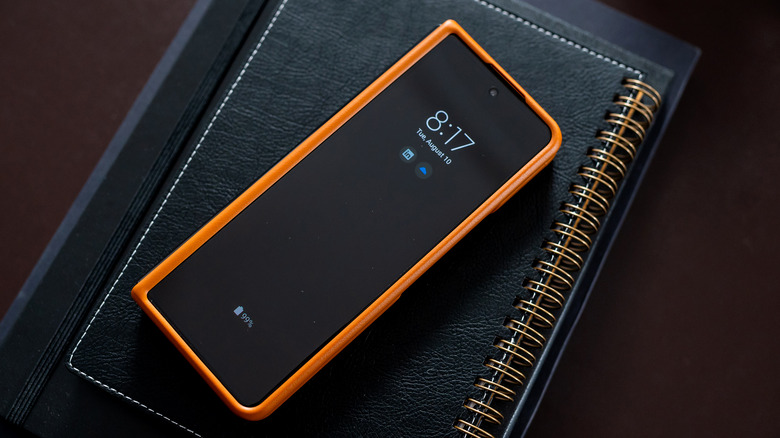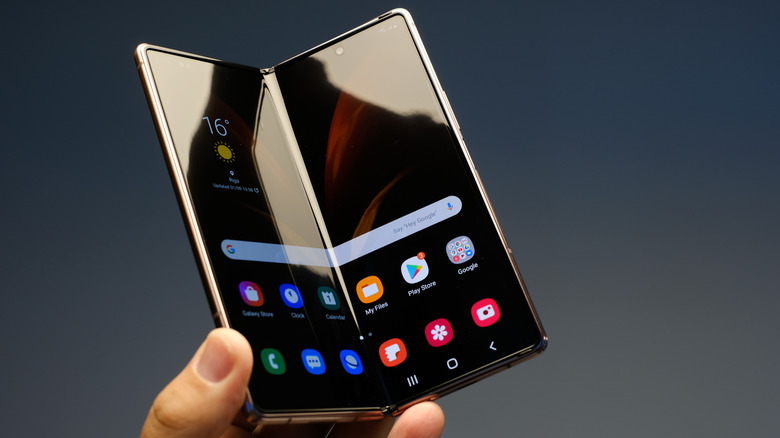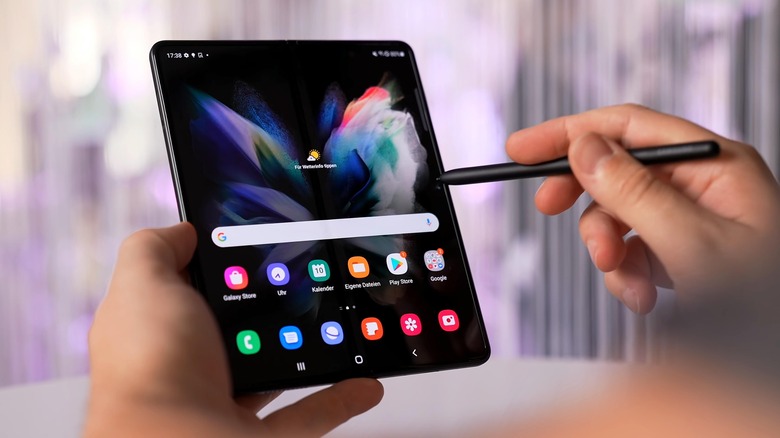How To Enable The Always On Display On The Galaxy Z Fold 4
Samsung released the Galaxy Z Fold 4 in August 2022; since then, it's been one of the most popular foldable smartphones. Whether it is the Snapdragon 8 Gen 1 SoC, a triple rear camera setup, or the 4,400 mAh battery, the device has everything it takes to be a modern flagship. Although, it is the presence of two displays makes the device unique. When closed, you can interact with the Fold 4 through a 6.2-inch Dynamic AMOLED display, similar to a regular smartphone's screen. However, the primary display of the device, which shows up when you unfold it, is a 7.6-inch Dynamic AMOLED screen with a peak brightness of 1,200 nits.
Given that both the primary and cover screens feature AMOLED panels, Galaxy Z Fold 4 can light up selected pixels on the lock screen. The pixels can take the shape of a clock or small icons to display essential information. This feature is called an always-on display or AOD. It lets us see time, notification icons, and battery, and informs us about missed phone calls on the lock screen without waking up our smartphones. However, on the Galaxy Z Fold 4, Samsung does not enable the always-on display by default. Nevertheless, once you set up your device, activating the feature is a matter of taps. If you're reading this article on a Galaxy Z Fold 4, open the Settings app in another window and follow the steps to enable the always-on display.
Enabling the Fold 4's always-on display is easy
Like most features, the Always On Display is also located in the Settings app. Here are the steps to enable always-on display on the Fold 4 (via Samsung).
- Swipe up from the top of the display to open the Notification section.
- Select Settings toward the top right corner.
- Scroll down and select Lock Screen.
- Select Always On Display and tap on the slider at the top right to enable the feature.
Now that you've enabled the always-on display on your Galaxy Z Fold 4, you can control when it shows up. There are four ways in which the always-on display shows up on the screen.
- Tap to show: Select this option if you want AOD to show up only when you tap on the display.
- Show always: Selecting this makes AOD appear constantly.
- Show as scheduled: The AOD will appear during the time set by you. Once you select this feature, tap on Set Schedule below it to set the starting and the end time.
- Show for new notifications: If you select this option, AOD will appear only when you receive a message or an update from an app.
Although AOD is a helpful feature, it increases battery consumption by keeping the display engaged throughout the day. Hence, it is wise to set a daytime schedule for it, something that also helps you get the most out of your Fold 4's battery.
Customize your Fold 4's always-on display
Usually, the AOD displays time in a digital format. However, you can customize it to showcase an analog clock or a calendar.
- In the Always On Display menu, select Clock style.
- Select from the five clock styles available on the screen or tap on the three dots option at the right to access four hidden options. These include a dual clock option and the month's calendar.
- You can change AOD's appearance by selecting a different color from the options toward the bottom of the display (via At&t).
You can also make an image from your gallery appear as a part of the AOD.
- In the Clock Style menu, select Image Clock.
- Now, select Gallery and tap Just Once at the bottom of the screen.
- Select an image you wish to appear as a part of the AOD.
- Move and scale the image to fit in the box using two fingers.
- Tap Done at the bottom right corner. Now lock your smartphone to see how the image appears.
Last but not least, you can adjust the brightness of the always-on display on your Galaxy Z Fold 4 too. In the Always On Display menu, there's an Auto brightness option. While enabling the option will set AOD's brightness per ambient lighting, disabling the feature allows you to set it manually with the help of a slider.


